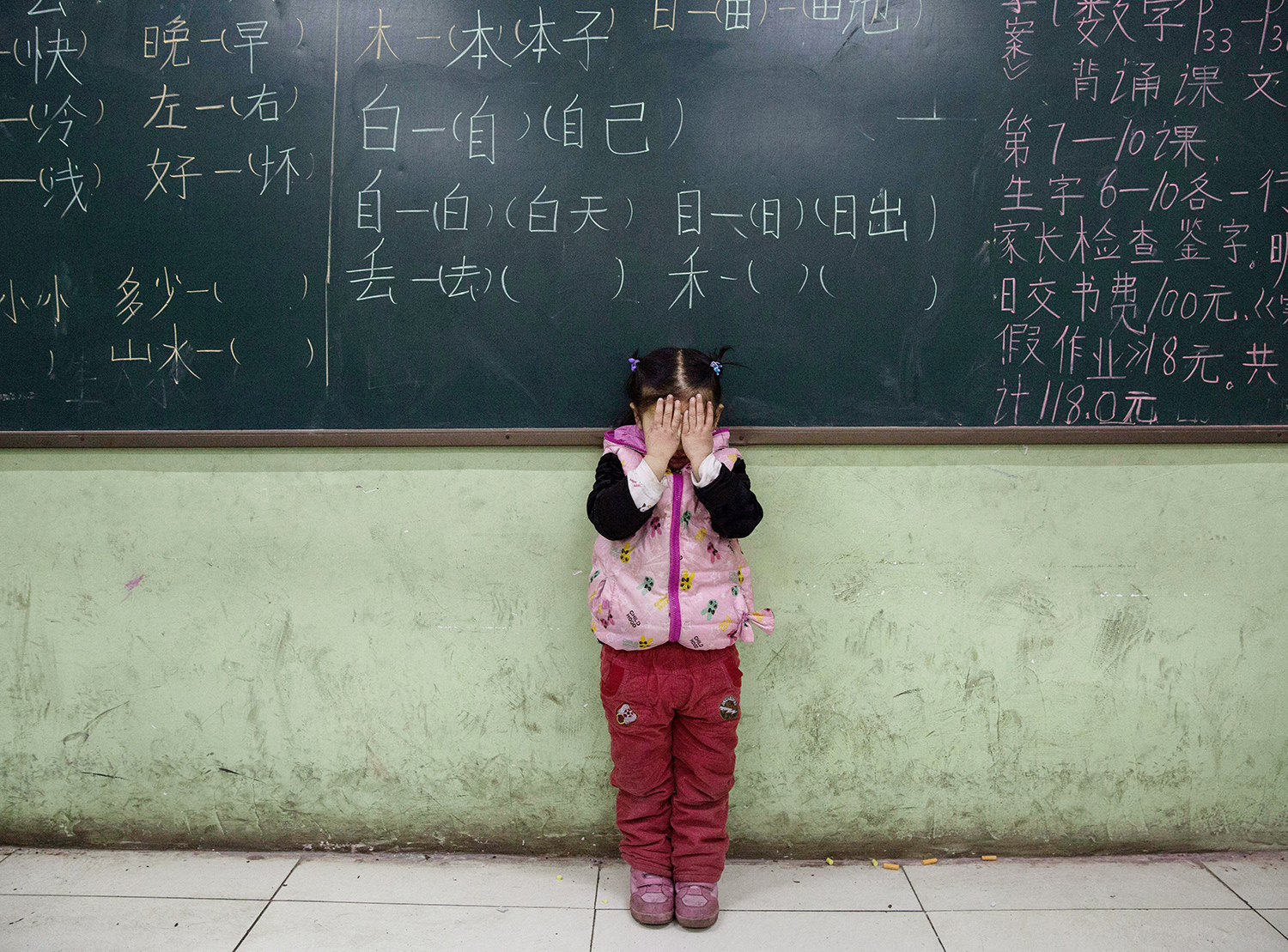Source: China File (2/6/20)
What a Picture of China’s One-Child Policy Leaves Out
Three Views of Nanfu Wang and Jialing Zhang’s ‘One Child Nation’
By Jie Li, Susan Greenhalgh, and Karen Thornber

Kevin Frayer—Getty Images. A student performs eye exercises in her classroom in Beijing, December 18, 2015.
===========================================
Brainwashed? Reflections on Propaganda in One Child Nation
By Jie Li
One Child Nation, a documentary distributed by Amazon Studios which was shortlisted for an Academy Award, is becoming one of the most influential films about China in the United States. Marketed as “the truth beyond the propaganda,” the film’s opening credits juxtapose luminous jars of aborted and abandoned fetuses against a military parade of robotic marching soldiers. Equating propaganda with lies, violence, and farce, One Child Nation at once reveals and recycles the logic, power, and aesthetics of propaganda.
Born in 1985, six years after the one-child policy was launched, filmmaker Nanfu Wang grew up seeing its omnipresent reminders “painted on the walls, printed on playing cards, calendars, matches, snack boxes, posters, all of them blended into the background of life in China.” She brings her American-born baby son back to her village in rural Jiangxi province, and describes herself as starting to “remember” the propaganda about the policy in textbooks, plaques on people’s doors, opera and dance performances, TV, and children’s songs. The film includes a photo of her as a teenager in a choir: “This was me performing propaganda songs. We all had the same makeup, the same dresses, and the same mentality.” This makes her wonder “if the thoughts I had were really my own, or if they were simply learned.” The film’s agenda, then, is to expose and unlearn propaganda. . . [click here to read all three essays in full]